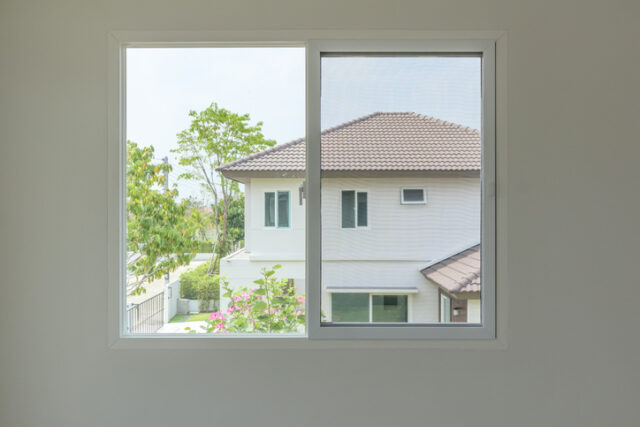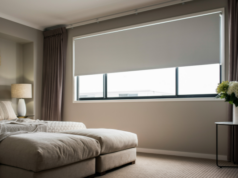
Fibreglass window frames are made from glass‑fibre‑reinforced polyester or similar composite materials. Their strength and low U‑value provide excellent thermal performance. Although not yet common in Australian housing, fibreglass is now regarded as one of the most thermally efficient frame materials available.
Thermal performance and durability
Fibreglass frames offer high insulation potential, especially when hollow cavities are filled with insulation. This can outperform timber or uPVC systems. The frames allow for slimmer profiles and larger glass areas while maintaining structural integrity. Fibreglass resists warping, rotting or expansion due to humidity or temperature changes and has an expected lifespan of several decades.
Fibreglass is non‑combustible under normal conditions and is resistant to UV fading and corrosion. Its compatibility with high‑performance coatings reduces maintenance and preserves finish quality over time.
Energy efficiency
Fibreglass systems typically offer superior thermal control and low U‑values thanks to the material properties and the ability to add insulation. Combined with double or triple glazing, low‑e coatings and inert gas fills such as argon or krypton, they help achieve higher star ratings under WERS and NatHERS regulations.
Insulated fibreglass frames can deliver Uw values around 1.5 W/m²·K with double glazing and below 1.0 W/m²·K with triple glazing. These performance levels support compliance with the mandatory 7‑star NatHERS shell rating in 2025.
Usability and aesthetics
Fibreglass frames remain stable over time with minimal thermal expansion. They are less prone to movement or seal failure compared to other materials, maintaining airtightness for many years. Their strength allows for larger panels and slim frames that maximise glass area and daylight.
Colour finishes are widely available, including darker tones, and fibreglass holds paint well. Some finishes act as a primer to allow easy repainting if needed.
Cost and availability
Fibreglass frames are typically 20 % to 50 % more expensive upfront than premium uPVC or thermally broken aluminium alternatives. However, long‑term durability, better thermal efficiency and minimal maintenance costs can make them cost‑effective over the life of the window.
While availability is expanding in Australia, options are still fewer than those for aluminium or timber systems. Sourcing may require working with certified or specialist suppliers.
Environmental credentials
Fibreglass has a low thermal expansion rate, long service life and resists corrosion without needing special coatings. Many systems contain recycled glass content and result in lower embodied carbon than aluminium or vinyl frames.
The environmental performance of fibreglass supports net zero targets and whole‑home energy goals for Australian renovation and construction projects.
When fibreglass makes sense
- In cold climates where thermal insulation and Uw targets are essential
- When slim frame sections or large glass areas are desired
- For climates with high UV exposure, humidity or coastal conditions
- If long lifespan and low maintenance costs are priorities
- When paired with triple glazing or smart glass options for next‑level performance
Fibreglass vs other frame materials
| Frame type | Relative cost | Energy performance | Maintenance | Ideal use case |
|---|---|---|---|---|
| Fibreglass | High | Excellent | Very low | High performance upgrades, large span glazing |
| Thermally broken aluminium | Medium‑high | Very good with thermal break | Low | Coastal sites, large format windows |
| uPVC | Medium | Very good | Low | Cost‑conscious energy upgrades |
| Timber | High | Good if insulated | High | Heritage or warm aesthetic projects |





